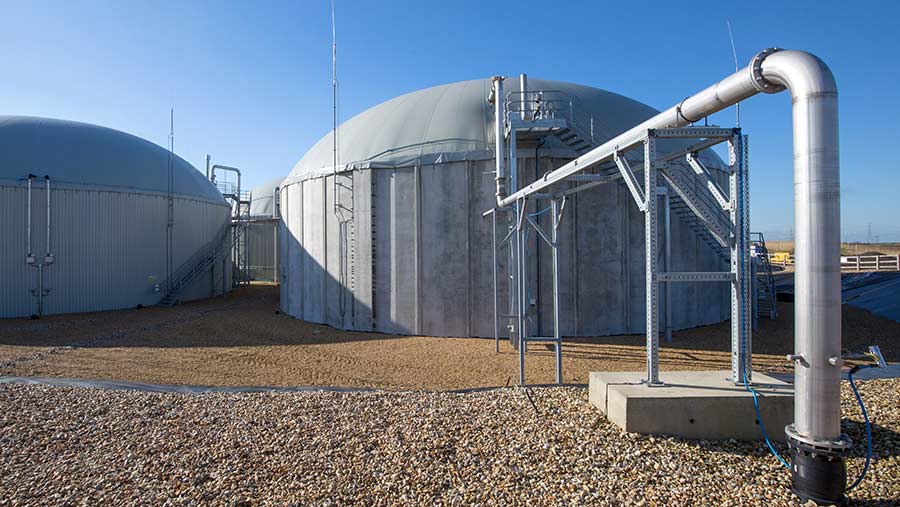Tariff rate changeover hits AD sector growth
 © Tim Scrivener
© Tim Scrivener The number of new AD plants slowed significantly in 2018, as projects stalled ahead of revised renewable energy tariffs.
According to the National Non-Food Crops Centre (NNFCC), just 13 AD plants outside the sewage treatment sector were commissioned in the year to April 2019, taking the total to 486.
That compares with an increase of 50-60 in 2017-18 and about 50 in the previous 12 months.
See also: Planning permission warning over biomass boilers
Lucy Hopwood, NNFCC lead consultant for bioenergy, believes the slowdown was due to a hiatus before revised Renewable Heat Incentive (RHI) tariffs were introduced in May 2018.
Payments have fallen since 2016 due to a process of degression – a government measure limiting the incentive to maintain cost control of the scheme.
In April 2018, RHI tariffs stood at 3.3p/kWh for tier one payments up to 40,000MWh of energy produced.
Above that threshold, and up to 80,000MWh, payments declined to just 1.95p/kWh with a further drop to 1.49p/kWh over that production level.
UK losing ground
But the government has acknowledged the low level of incentive means progress in renewable energy production is slowing in the UK, and it is losing ground to other EU member states.
Early in 2018, it was anticipated that government RHI rates would rise substantially from May 2018, Ms Hopwood said.
Projects were held back until the new rates – 5.6p/kWh for tier one energy, 3.29p/kWh for tier two and 2.53p/kWh for tier three – were finally confirmed.
Even after the rates were announced, it was stipulated that to qualify, any planned project should not have broken ground before May 2018, putting a further hold on progress.
Since then there has been a flurry of activity, with 28 projects securing a tariff guarantee and a further 25 awaiting a decision, Ms Hopwood said.
Even though the latest rates have fallen, since degression once again started to reduce prices from January 2019, RHIs are still substantially above levels in April last year.
Growth set to continue
The highest rate for tier one now stands at 4.76p/KWh, roughly equivalent to that seen in 2016-17, when AD plant construction boomed, so growth is expected to continue.
A peak in activity is also expected with Feed-In Tariffs (Fits) for electricity generation, which closed to applications on 31 March this year.
But prospective operators could apply for pre-accreditation, which means they will get be able to join the scheme, providing work is completed within 12 months, Ms Hopwood said.
“There were 39 pre-accreditation applications in the final month. While not all will go ahead, we could see a peak in installations of combined heat and power units in the coming 12 months,” she suggested.
What is the NNFCC?
The National Non-Foods Crop Centre was established by the UK government in 2003.
It has grown to become a leading commercial bioeconomy consultancy serving an international client base across bioenergy and bio-based products.
